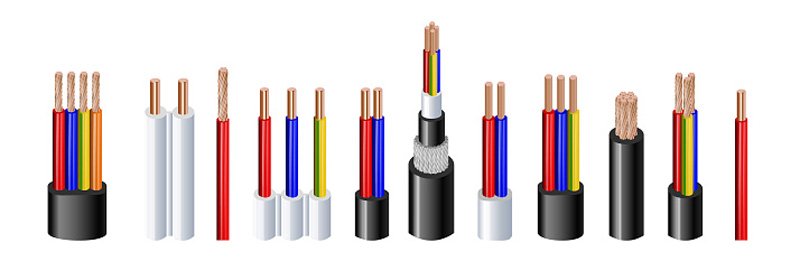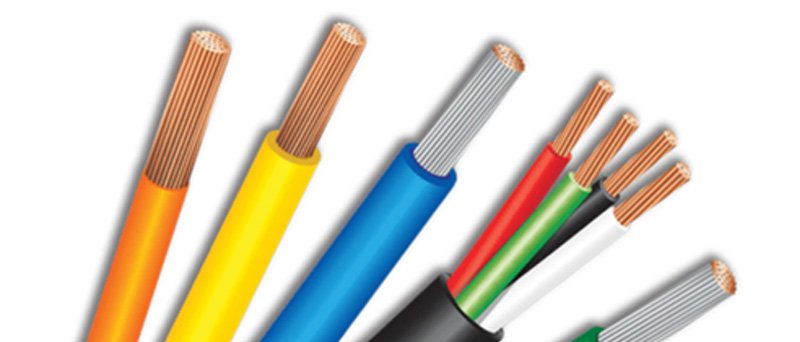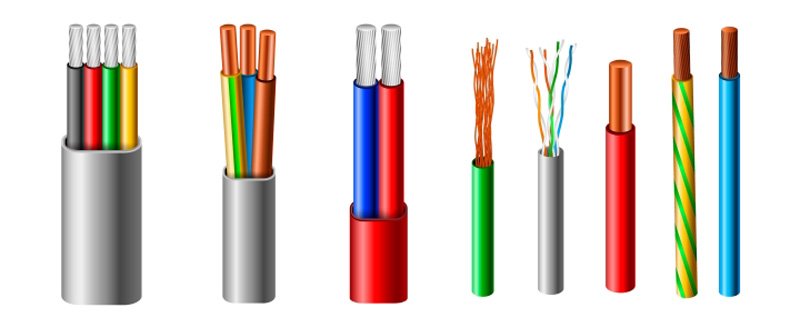
Wires and cables play a vital role in transmitting electrical signals and power within a cable assembly. However, they are available in various types, forms, and materials. Therefore, understanding the different types of wires used in cable assemblies is crucial for achieving efficient results during application. To select the right wire, numerous factors must be considered, including the wire material, insulation, resistance, size, and market approval.
What are the types of Wires Based on the Material?
While aluminum and copper are the most commonly used wire materials, this does not necessarily imply that they are the superior conductors. Rather, their widespread adoption is attributed to their accessibility and cost-effectiveness.

Copper wires enjoy extensive utilization owing to their versatility and capacity to be manufactured in solid, braided, and stranded forms. They also exhibit superior mechanical stability. Notable examples of copper wires include:
- GPT- perfect for circuit wiring
- TWP-though smaller in diameter than GPT, it has a lot of applications that require thin wires.
- HDT is great for cable assembly applications requiring higher protections than the GPT.
- GXL-perfect for thinner cable assembly wire requirements and high heat resistance.
- TXL- apart from being a higher heat resistance, this copper wire also features lightweight capabilities.
Aluminum wires are employed in electrical transmissions due to their lower cost compared to copper and their corrosion-resistant properties. Aluminum wires possess high rust-resistance and are rust-proof, making them an ideal choice for cable assemblies operating in damp or wet environments. Common examples of aluminum wires include:
- Aluminum DLO cable
- Custom aluminum cable
- Aluminum AC wires
- Aluminum high voltage wires
On the contrary, gold is an expensive wire material predominantly utilized in specialized cable assemblies to ensure extended lifespans, thanks to its corrosion-resistant qualities. Gold wires exhibit exceptional electrical properties with low reactivity, rendering them ideal for cable assembly applications that demand precision, durability, and stability in harsh environments.
Gold wires have a wider application in the medical, electrical industry, and aerospace cable assemblies.
What are Cable Types Based on Insulation?

When selecting the appropriate cable assembly wire, there are numerous wiring insulation options to consider. Despite the simplicity of wire construction, some manufacturers have incorporated unique features into their designs, enabling them to easily trademark their materials. The various types of wire insulations include:
-
PVC Insulation: PVC insulation is predominantly used in cabling wires due to its excellent insulating capabilities. It is best suited for applications requiring low to medium-voltage cable assemblies. Additionally, its chemical stability and durability make it ideal for applications needing low-frequency insulation, including halogen-free cables commonly utilized in aircraft.
-
PE Insulation: Currently, PE (Polyethylene) insulation is one of the most produced plastics owing to its versatility in application. It can be easily remolded into any shape and is suitable for various cable assembly applications due to its resistance to acids, water, alkalis, and solvents.
-
PP Insulation: PP (Polypropylene) insulation boasts high heat resistance across numerous applications. It features a hard outer shell with limited flexibility, with a temperature range of -30°C to 105°C.
-
TPE Insulation: Commonly used in flexible cables, TPE (Thermoplastic Elastomer) insulation can withstand various mechanical loads. These cables are also highly resistant to external factors such as chemicals and higher temperatures.
-
PU Insulation: Also known as TPU (Thermoplastic Polyurethane), this unique thermoplastic material is used in the manufacture of wires and cables. It is resistant to both UV rays and water and features a broad temperature range, making it ideal for outdoor applications.
How to Choose a Cable or Wire Based on the Application?
Cable assembly wires serve diverse applications based on specific requirements and environmental factors. Here are some examples of cables or wires tailored for different applications:
-
Ribbon Electric Cables: This type of cable consists of multiple wires running parallel to each other. They are primarily used for the simultaneous transmission of multiple data streams. For instance, they can be utilized to connect a CPU to a motherboard. Generally, they are ideal for interconnecting various networking devices.
-
Coaxial Cables: These cables feature a steel or solid copper conductor enclosed within a metallic tape or braid. Their primary application is in audio and video networking due to their rapid signal transmission capabilities.
-
Fiber Optic Cables: Used extensively within the telecommunications industry for transmitting telephone signals, television signals, and internet signals from one source to another. They are particularly common in medical, industrial, and defense applications.
What are some of the Market-Approved Cable Assemblies Wire and Cables?

One of the crucial steps in designing a cable assembly system is selecting the appropriate wire. However, given the myriad of options available in the market, it is imperative to choose cables and wires that are approved by industry standards. This includes:
-
UL Wires: UL wires are RoHS-certified cables commonly used in various wiring harness designs. The advantage of UL cables lies in the fact that their specifications are printed on the wire jacket. Some common UL wire options include UL 100/1569, UL1015, and UL2725, among others.
-
VDE Wires: VDE-tested cables have undergone rigorous testing to ensure their safety and quality efficiency. This testing is conducted in accordance with both international and national harmonized standards, including RoHS and REACH compliance.
-
CCC Wires: CCC wires have undergone the recommended testing and approval as per CCC and REACH requirements. They are highly recommended in the market for their ability to enhance any cable assembly system.
-
SAA Cables: SAA cables are designed to transmit power between a measured interface and a ShapeArray. Therefore, SAA cables are high-quality wire materials used to provide the necessary power and protect the signal integrity of ShapeArrays.
Finally
The effectiveness of a cable assembly is largely determined by each cable and wire used within it. Hence, it is crucial to make the right decision when choosing the cable assembly wire.